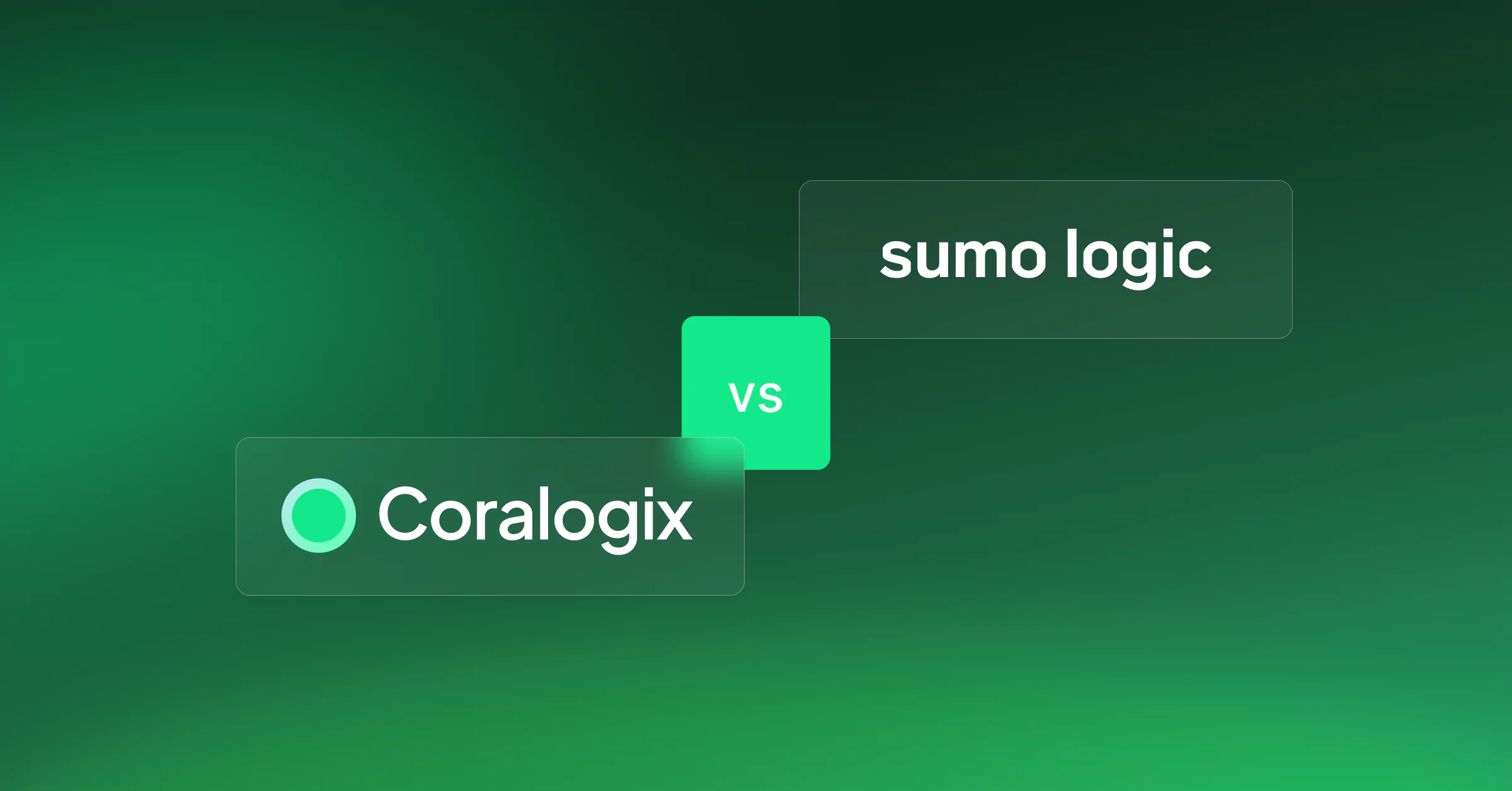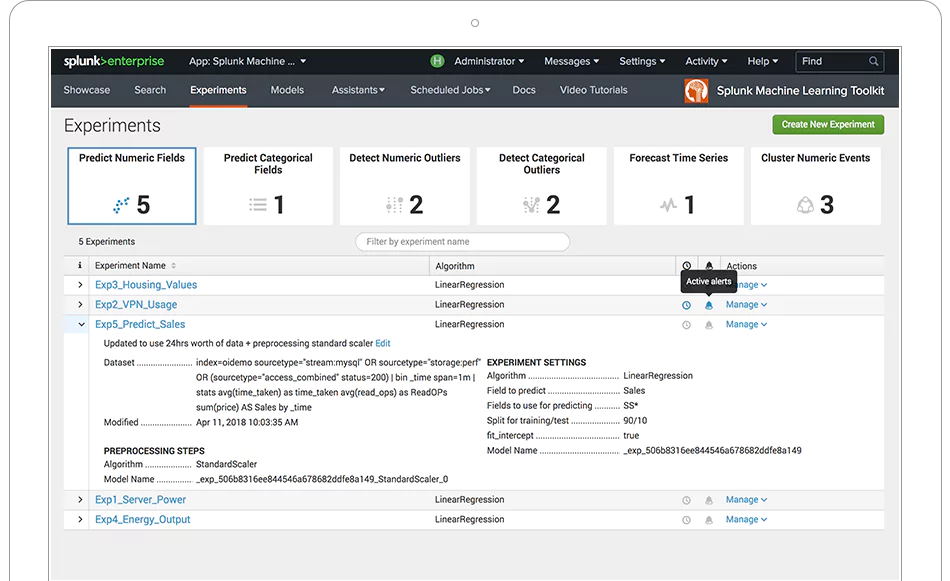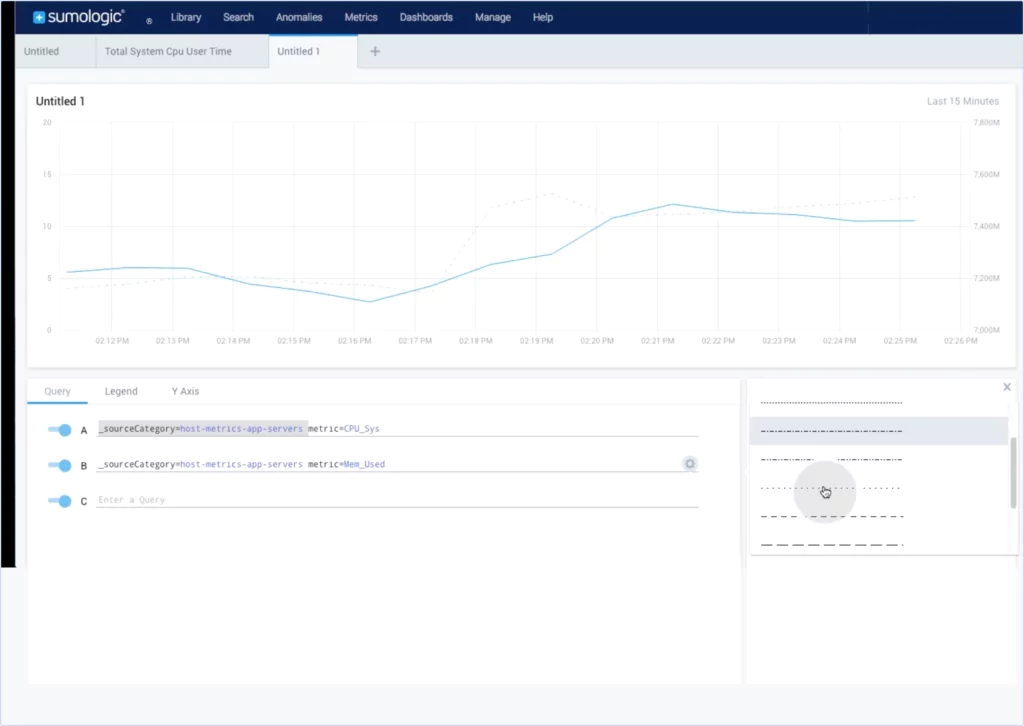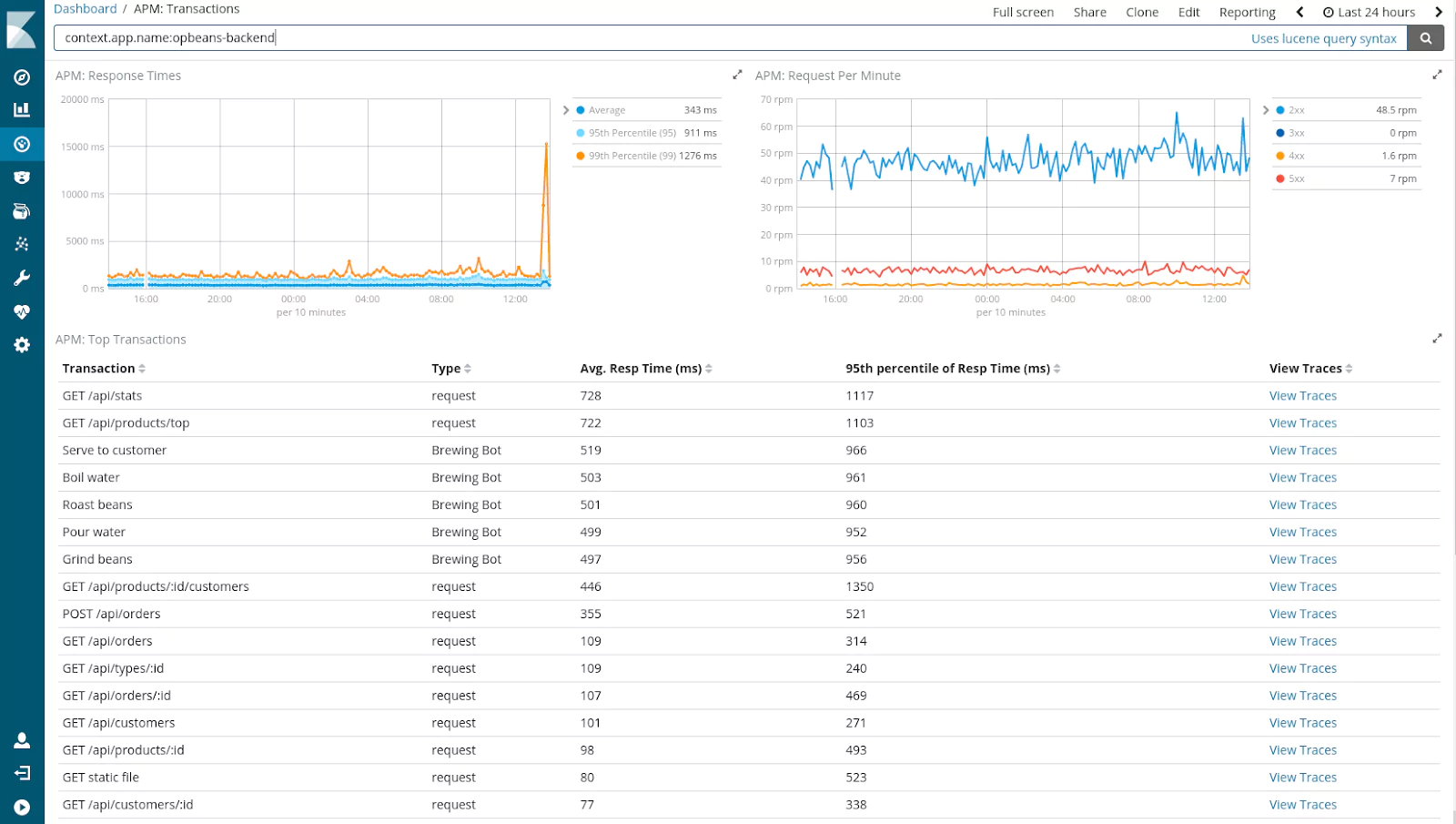Sumo Logic has been a staple of the observability industry for years. Let’s look at some key measurements when comparing Coralogix vs. Sumo Logic, to see where customers stand when choosing their favorite provider.
Summary: Coralogix vs. Sumo Logic
Core Features – Logs, Metrics, Traces & Alerting
Both Coralogix and Sumo Logic support ingesting logs, metrics, and traces. These three data types are common across almost all SaaS observability platforms, so it’s no surprise that they’re well covered in both offerings.
Data Correlation and Usability – Coralogix vs. Sumo Logic
While both platforms can ingest logs, metrics, and traces from many different sources, Coralogix excels at bringing all this data together in a single, cohesive journey that allows users to sail between data types seamlessly.

Coralogix Flow Alerts
A significant difference between Coralogix and Sumo Logic is Coralogix Flow Alerts. Flow Alerts allow users to orchestrate their logs, metrics, traces, and security data into a single alert that tracks multiple events over time. This unique capability enables customers to create alerts that describe the complete picture of their system.
Machine Learning Capabilities – Coralogix vs. Sumo Logic
Both offerings make use of machine learning for similar objectives. They both utilize clustering algorithms to group similar logs and profile customer data to detect anomalies and “unknown unknowns.”
However, the Sumo Logic offering, named Log Reduce, is far less sophisticated than Coralogix Loggregation. While Log Reduce relies heavily on Regex matching, Coralogix Loggregation requires no such configuration and will automatically cluster logs and provide insights without any assistance required.
SIEM, SOAR, and CSPM, and SSPM
Coralogix offers SIEM, CSPM and SSPM solutions. Sumo Logic offers SIEM and SOAR. This means that while Sumo Logic has a built in SOAR solution, it does not offer any visibility into the security posture of cloud infrastructure or the SaaS solutions on which customers depend. This is where Coralogix shines.
Coralogix also supports webhook integrations for any downstream platform. Combined with powerful alerting, users can easily route and orchestrate their remediation systems. The flexible nature of this integration means that customers are not locked into the tools that Coralogix is natively compatible with, and instead can easily fit Coralogix into their existing system and orchestrate their response to incidents.
The Security Resource Center – Your Extended Security Team
There are clear differences in platform features between Coralogix and Sumo Logic, but that isn’t the end of the story. Coralogix offers the Security Resource Center (SRC). The SRC offers threat hunting and incident response services, without the headache of hiring or training an in-house team. The SRC team are comprised of Analysts, Researches and Threat Hunting experts. This service, coupled with the unparalleled scalability of the Coralogix platform, and the cost effective nature of the SRC (20% of the cost of an in-house team) makes the Coralogix platform an incredibly powerful solution.
Pricing Model
Here, again, Coralogix wins out. The Coralogix pricing model is based entirely on GB ingested into the data pipelines that meet your needs. There is no extra costs for features, hosts, etc. making it easy for you to predict costs. Here are the data pipelines available in Coralogix:
- Frequent Search = Data is indexed and placed in hot storage. Full access to all features.
- Monitoring = Data is not indexed but fully analyzed in-stream and stored in archive with rapid querying. Full access to all features.
- Compliance = Data is sent straight to archive but can be fully queried at high speed with no extra cost.
This unified pricing model makes it much easier for customers to understand how much they will be charged.
Built-in cost optimization with Coralogix
Coralogix does not tier its offering, nor does it charge for different services. Customers pay for their data and get everything else included. One would then expect that the Coralogix per-unit price is higher, right? No, Coralogix is drastically lower.
This is because Coralogix leverages its custom-built Streama© architecture, which enables it to process data in-stream, and make decisions about data, long before it has been stored and indexed. This enables Coralogix to run much more efficiently than anyone else, and in turn, that is reflected in the price point.
Sumo Logic’s pricing stumbles in the ring
By contrast, Sumo Logic charges different rates for different services, and charges a per-host amount for Infrastructure Monitoring, which scales poorly when dealing with microservice-based architectures. Additionally, Sumo Logic’s new flex pricing, while claiming that you only pay for data you use, is priced by scan volume, not valuable data. A query can scan multiple terabytes of logs, before returning only a small portion of valuable information. Sumo Logic will charge for all of those terabytes scanned, anywhere between $2.05 – $3.77 per TB, depending on region and usage profile, which only becomes a bigger problem as customers ingest more data.
Archiving and Archive Query
When comparing Coralogix vs. Sumo Logic archiving, the differences become clear. While both support archiving of log data into AWS S3, Coralogix takes this a step further with a few key additions:
- Coralogix also supports archiving of tracing data, for long-term performance analysis
- Coralogix allows users to query their archive, without the need to reindex
Both platforms support reindexing, but only Coralogix allows users to directly query their archive, without the need to rehydrate their data. Even though the data is held unindexed within S3, query times are still blazing fast. A 10TB query completes in around 10 seconds. For context, the Coralogix DataFusion query engine is up to 5x faster than AWS Athena.
Unmatched Data Analysis
While Sumo Logic supports reindexing of archived data, this creates a barrier for its customers and opens difficult questions, for example: How much data should be reindexed? With Coralogix, customers can query their archive directly, for no additional cost. Coupled with the power of DataPrime, Coralogix supports schema on read & schema on write queries, which opens up unparalleled data discovery, and makes data navigation much more fluid.
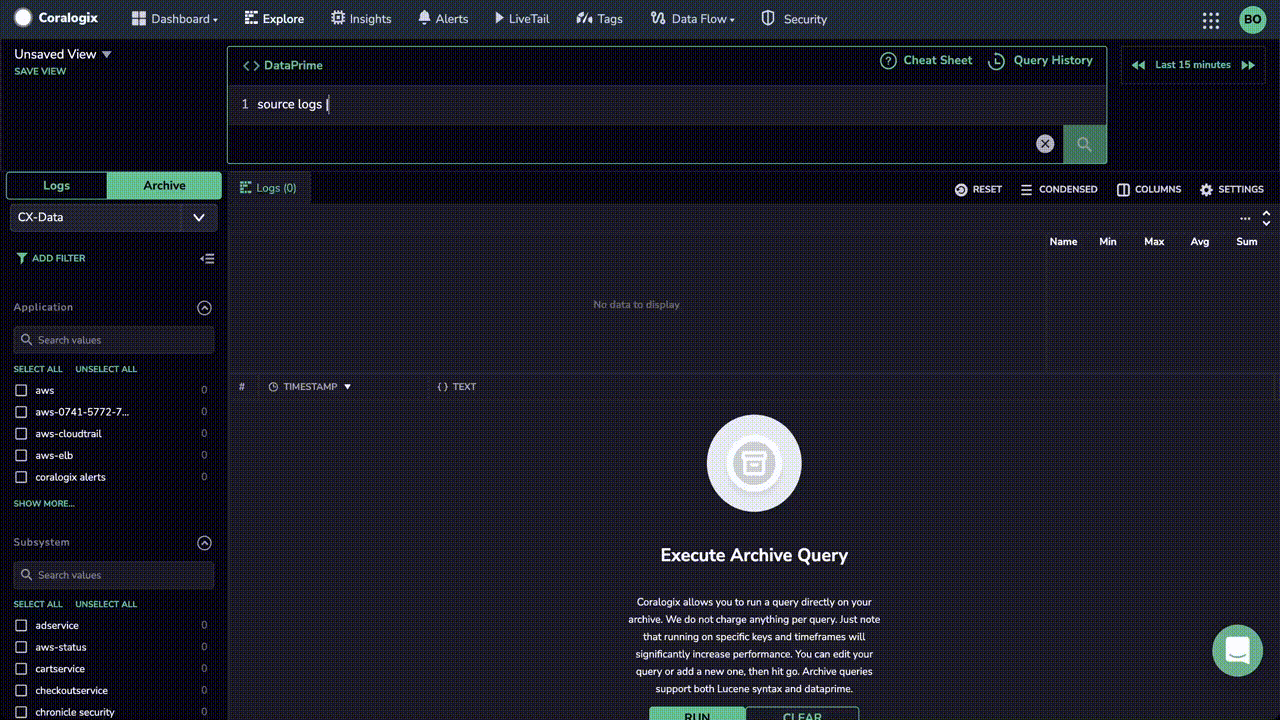
Archive Query enables HUGE cost optimizations
Coralogix customers often begin by indexing the majority of their data, but over time, the majority of their data tends to go straight to the archive. This is because the archive is not hidden away, and it can be rapidly queried in seconds, for no additional cost.
This functionality means Coralogix customers can store the majority of their data in S3, and pay at most $0.023 / GB for storage (further savings are possible with data compression). When this is coupled with the Compliance pipeline’s ingest costs in Coralogix, which are $0.17 / GB, this makes a per GB cost for ingest and storage of $0.193 / GB. This is a fraction of anyone else on the market, and regularly allows customers to cut costs by between 40% and 70%.
Support
There is no competition in the arena of customer support. The shortest response time SLA that SumoLogic offers to its enterprise customers is 0.5 days. In contrast, Coralogix currently boasts a median support response time of 15-30 seconds. To boot, it offers this support to all of its customers, not just those that are paying for the premium support.
This is because Coralogix does not offer a tiered service. All features, including world-class support, are available to all customers, regardless of spend. This model means Coralogix offers, by far, the best support on the market.
Even onboarding is free!
Coralogix even offers a free onboarding service, to help new customers get integrated into the Coralogix platform. This involves expert engineers, working with customer teams, to deploy software according to best practices. This means that when a customer decides to join Coralogix, they’re getting support from day 1.
All in all
While Sumo Logic has an outstanding set of features, the unique Coralogix differentiators are difficult to beat. 30 second median response time, unlimited retention and remote query, Flow Alerts, and the most transparent pricing model on the market.
But don’t take our word for it. Sign up for a free trial today, and see the next generation of observability for yourself.

